Combining Precision with Holistic Recovery in Shoulder Care
In orthopedic medicine – especially in the specialized world of shoulder treatment – success often lies in the integration of targeted procedures with supportive therapies. Barbotage, known for its effectiveness in treating calcific tendonitis, doesn’t operate in isolation. It plays a pivotal role within a broader strategy aimed at restoring joint health and long-term function.
In this article, we explore how barbotage fits into comprehensive shoulder care plans, and how it works alongside physiotherapy, medication, and lifestyle modifications to deliver optimal patient outcomes.
What Is Barbotage, and Why Is It Used?
Barbotage is a minimally invasive procedure that involves using a needle to flush and aspirate calcium deposits from the rotator cuff tendons—most commonly the supraspinatus—in the shoulder. The technique is guided by real-time ultrasound and is typically recommended when pain, stiffness, or functional limitations persist despite conservative care.
Where Barbotage Fits in the Treatment Spectrum
Calcific tendonitis can cause debilitating pain and restrict mobility, particularly in overhead activities. Initial treatment usually involves:
- NSAIDs or corticosteroid injections
- Rest and activity modification
- Physical therapy (PT)
When these don’t lead to improvement, barbotage serves as the next-line intervention—not a replacement for PT, but a complement to it.
Integrating Barbotage with Other Treatment Modalities
1. Physiotherapy (Before and After Barbotage)
Before barbotage:
PT helps maintain range of motion and manage inflammation. Gentle mobilization prepares the joint for faster post-procedure recovery.
After barbotage:
PT becomes even more critical. With the deposit removed or reduced, the shoulder is more responsive to:
- Strengthening exercises
- Stretching and mobility routines
- Postural correction
A shoulder specialist often collaborates closely with physiotherapists to time therapy sessions appropriately, usually beginning light PT within 5–7 days of the procedure.
2. Pharmacological Support
While barbotage reduces the need for long-term medications, some pharmacological interventions still play a role:
- Short-term NSAIDs post-procedure to manage residual soreness
- Steroid injections may be added during barbotage to calm acute inflammation
- Muscle relaxants or topical agents in patients with surrounding muscle tension
This balanced approach helps manage pain without over-reliance on medications.
3. Lifestyle and Ergonomic Adjustments
Patients recovering from calcific tendonitis often benefit from reviewing the movements or habits that may have contributed to their condition:
- Desk ergonomics for office workers
- Warm-up routines for recreational athletes
- Shoulder-safe lifting techniques in active or manual labor jobs
Integrating barbotage into a treatment plan means it must be supported by lasting changes that protect the joint over time.
4. Imaging and Monitoring
Post-barbotage follow-up typically includes:
- Ultrasound or X-ray to monitor residual deposits
- Functional assessments by the shoulder specialist
- Physical therapy progression plans
These checkpoints ensure the shoulder is healing properly and allows for adjustments in the treatment plan if needed.
5. Alternative and Supportive Therapies
Depending on patient preference and physician guidance, other supportive therapies may include:
- Dry needling or acupuncture for myofascial tension
- Manual therapy by certified physiotherapists
- Hydrotherapy to gently reintroduce movement in a low-impact environment
Barbotage enables many of these therapies to be more effective by eliminating the core source of irritation.
Case Integration Example: Multimodal Recovery
Patient: 45-year-old physical therapist with right shoulder pain
Diagnosis: Calcific tendonitis of supraspinatus
Treatment Plan:
- 4 weeks of pre-barbotage PT – minimal improvement
- Barbotage performed with steroid flush
- Return to PT within 1 week
- Gradual resistance training at week 3
- Full activity resumed at week 6
Outcome:
Pain resolved, full mobility restored, and improved shoulder mechanics sustained with continued PT and ergonomic changes.
Barbotage is not a standalone cure—it’s a strategic piece of the shoulder recovery puzzle. When integrated into a multidisciplinary plan that includes physiotherapy, medication, imaging, and lifestyle shifts, it provides a powerful boost toward lasting relief and full function.
Shoulder specialists today increasingly recognize the value of a team-based, integrated approach, where barbotage opens the door for deeper, more effective recovery.
FAQs: Integrated Care and Barbotage
1. Can I skip physical therapy if barbotage works well?
Not recommended. PT helps solidify gains made by the procedure and prevents recurrence or compensatory injuries.
2. How soon after barbotage can I begin therapy?
Usually within 5–7 days, based on the specialist’s guidance and symptom response.
3. Do I need to change my exercise or work habits after the procedure?
Yes, especially if previous routines contributed to tendon stress. Ergonomic and movement reviews are essential.
4. Is barbotage effective without other treatments?
While it can reduce pain on its own, combining it with other treatments enhances outcomes and reduces long-term issues.
5. What happens if barbotage doesn’t fully resolve the problem?
The next steps may include repeat imaging, additional therapy, or (in rare cases) a referral for arthroscopic intervention.
The information in this article is for educational purposes and Dr Kruse may recommend alternate treatment options to best address the individual patient’s needs.
